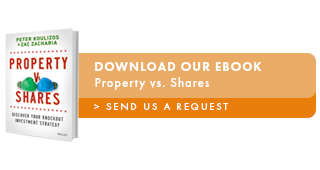Staying at home last year may have proved costly based on global returns.
The Australian share market went into overdrive over the last few weeks of 2023, gaining more than 7% as signs of a soft landing and improving economic conditions fuelled global markets.
It was a strong end to what, until then, had been a fairly lacklustre year for the Australian market. In fact, at the start of December, the Australian market had gained little ground over the previous year.
The December tailwind changed that, helping the Australian market – measured by the top 300 listed companies that make up the S&P/ASX 300 Index – to deliver a total annual return (including company dividends) of 12.13%.
How other markets fared
While the Australian share market’s double-digit total return for 2023 was reasonable, it lagged the much stronger returns by international markets.
For example, the United States’ share market – measured by the S&P 500 Total Return Index (incorporating the top 500 companies) – returned 26.29% last year after including company dividends, more than double the return of the Australian share market.
Although not quite as strong as the U.S. market, the FTSE All-World Total Return Index – which incorporates around 4,000 companies listed on share markets in 48 countries – still rose an impressive 21.25% over 2023.
In general terms, it can be said that investors with broad exposures to the U.S. and international share markets did much better last year than those highly exposed to the Australian share market. From an investment perspective, it definitely paid to travel abroad.
Australian-listed companies by total market capitalisation represent only around 2% by value of the global equities market.
It’s important to note that every share market in the world is structurally different. The Australian share market is dominated by big miners and banks, with the top 10 companies on the Australian Securities Exchange accounting for more than 46% of the market’s total value.
The U.S. share market is largely dominated by big technology companies, with the top 10 companies on the New York Stock Exchange accounting for around 31% of that market’s total value.
It’s quite normal for different share markets to deliver varied returns, because at the end of the day they’re made up of different companies. Individual share markets can also be impacted by domestic factors as well as global factors.
Aussie Aussie Aussie
When it comes to investing, there’s a mountain of evidence to show Australians gravitate towards “home grown” Australian stocks at the expense of having exposure to companies listed on international share markets.
The ASX Australian Investor Study 2023 found that 58% of the Australian investors it surveyed held shares listed on the ASX directly, but only 16% held international shares. The same study found that a slightly higher 73% of self-managed super fund investors held Australian shares directly, but only 23% held international shares.
Home country bias is certainly not unique to Australian investors, and it generally reflects the fact that many investors feel safer investing in companies they interact with in their daily lives.
There are other factors behind home country bias. Some investors worry that investing offshore is riskier, more costly, and potentially more prone to exchange-rate and geopolitical risks.
Yet, it’s easy to overlook the obvious. That is, many of the devices and products we buy in Australia, the stores we shop in, the vehicles we purchase, and other goods and everyday services we use, are made and supplied by companies listed on international share markets.
Without naming names, think of the biggest brands in the world that you’re using on a daily basis.
Another reason behind Australia’s home country bias relates to tax. That is, Australia’s dividend imputation system means that some or all of the tax already paid by a company may be attributed, or imputed, back to its shareholders as a tax credit. These are known as dividend franking credits and can be an attractive drawcard for investors.
Investing around the world
As noted above, different share markets tend to deliver different investment returns over time.
At times the Australian share market has outperformed international markets while, just like last year, at other times it has underperformed. Chasing last year’s returns from different share markets is potentially quite risky, because sometimes the best performing market in one year can be the worst performing the next year.
That’s really where investment diversification comes into play. Having a broad spread of investments across different share markets, industry sectors and companies will invariably help to smooth out volatility and returns over time.
For the same reason, so will having a diversified mix across multiple assets classes.
Analysis by Vanguard shows that investors with broadly diversified share exposures to Australian and international markets have generally experienced lower portfolio volatility over time than investors with just Australian share exposures.
Importantly, investing in assets across different countries and currencies can help reduce risk within a portfolio and enhance returns over the long term.
Gaining exposure to the broader Australian share market and international share markets is very easy, largely thanks to the wide array of exchange traded funds (ETFs) that provide quick exposure to large numbers of companies through a single listed security.
That’s how a growing number of Australian investors are choosing to invest across both the Australian share market and international markets.
An iteration of this article appeared in The Australian.
Feel free to contact our investment team to find out how we can help you reach your financial goals. Give us a call at 08 8231 4709 or send us an email at info@centrawealth.com.au.
Article courtesy of Vanguard.


